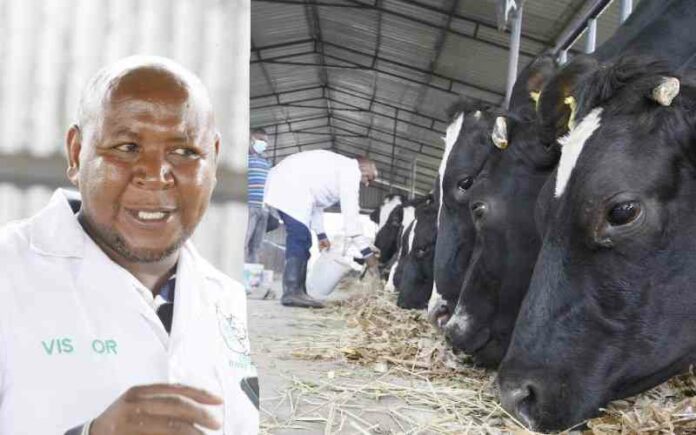Feeding is one of the important aspects of dairy farming as it determines the productivity of the animal.
This means that poorly-fed animals will end up producing less milk compared to those on a well-rationed balanced diet.
With low-milk production, it means that a farmer will end up making low or no profit. Alex Gathii, a Dairy Production, Processing, and Marketing consultant, shares the different ways through which farmers can boost milk production while managing the cost of production.
Nutrition– According to Gathii, not providing the cow with the right nutrients leads to low milk production. He notes that a cow has proper nutrition when it is fed with proteins, energy, minerals, vitamins, fibre, and water.
These nutrients can be obtained from forages such as maize stalk, sorghum, Napier grass, and silage, as well as concentrates like grains and seeds.
“In total, a lactating cow should consume dry matter equivalent to at least 3 percent of its body weight. For instance, if the cow weighs 600kg then its total feed should amount to at least 18kg of dry matter per day.” Says Gathii.
Cheap dairy feed producing 30 litres of milk per cow daily
He adds that good forages for dairy cows include grasses such as Kikuyu and Napier, Boma Rhodes, lucerne hay, Brachalia, sweet potato vines, desmodium, sorghum, and maize, among others.
On the other hand, good concentrates for dairy cows are dairy meal, maize germ, wheat bran, undiluted molasses, and seed cakes.
“The cow’s meal – mixed up well – should be divided into six potions, which would then be given to the cow throughout the day,” he adds.
Water intake– Water accounts for approximately 87 percent of the milk produced. According to Gathii, a dairy cow should be provided with an average of between 80 and 120 litres of clean water per day.
Robert Macharia: How I manage 82 dairy goats on my small plot in Githurai 45
“It is very important that the water be clean because cows won’t drink to their fill from dirty water.” Adds Gathii.
Housing- He notes that the cow barn should have maximum lighting, proper air circulation, feeding space, and space to rest to prevent stress which can affect the animal’s production.
A cow barn with a raised roof (at least 4m in height) is ideal for air circulation. And the cows should be segregated into smaller groups to avoid social stress.
In addition, cow bedding should be dry and soft to prevent diseases. Gathii advised farmers to use organic matter like sawdust or sand.
Breed- The breed of the animal reared also highly determines the amount and quality of milk produced.
Friesians are at the top as they produce, on average, the most amounts of milk. Ayrshire follows closely. Then Guernsey and Jersey wrap up the top four most prolific dairy breeds
Gathii adds that the best dairy cows have certain physical features: a high body frame, large and wide in size, and a well-developed udder.








